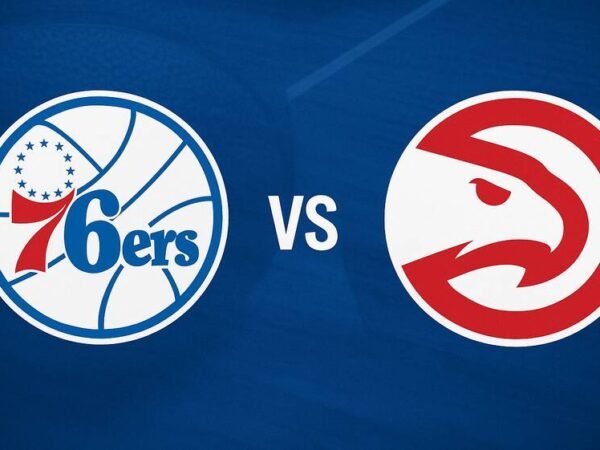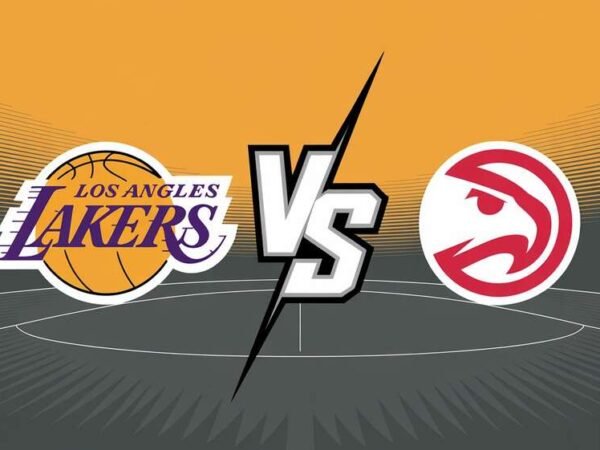Introduction
The New Orleans Pelicans and Golden State Warriors share a budding rivalry in the NBA, offering fans thrilling matchups defined by high-energy plays, top-tier talent, and memorable moments. Both teams bring unique strengths to the court, with the Pelicans known for their explosive young talent and physical play. At the same time, the Warriors have long dominated with their sharpshooting prowess and fluid ball movement. Understanding how player performances impact game outcomes offers valuable insights for fans and analysts alike, as individual contributions often shape the narrative of each game. This analysis dives into the statistics, trends, and performance metrics that define these matchups, illuminating how each player’s strengths and weaknesses factor into the outcome.
Historical Matchups and Player Performances
The Pelicans and Warriors have historically delivered intense matchups with a balance of offense and defense. While the Warriors had the upper hand during their peak championship years, recent games have been more competitive, with the Pelicans’ young core steadily challenging the seasoned Warriors squad. In recent encounters, standout performances from players like Stephen Curry, Zion Williamson, and Brandon Ingram have frequently shaped the narrative. Curry’s three-point shooting and Ingram’s mid-range finesse have often created critical scoring runs. Williamson’s powerful drives to the basket inject physicality and intensity into the game. These individual displays highlight the unpredictability and excitement of Pelicans-Warriors games.
Offensive Metrics Comparison
Points per Game (PPG) is a crucial measure of offensive productivity for both teams. The Warriors typically rely on high PPG from their key shooters, with Curry often leading in scoring, supported by players like Klay Thompson and Jordan Poole. The Pelicans present a more balanced offensive approach, where Ingram, Williamson, and CJ McCollum contribute significantly. Comparing PPG highlights the Warriors’ dependency on perimeter shooting versus the Pelicans’ emphasis on paint dominance and varied shot selection.
Field Goal Percentages and Shooting Efficiency reveal contrasting approaches. The Warriors are known for efficient three-point shooting, often recording a high three-point field goal percentage (3P%) but with a slightly lower field goal percentage (FG%) overall due to the difficulty of their long-range attempts. The Pelicans, focusing on drives and mid-range shots, often see a more balanced FG% and 3P%, indicating a style less dependent on perimeter shots. Williamson’s impressive FG% close to the rim usually offsets the team’s mid-range misses, making him a critical component of their offensive efficiency.
Given their iconic shooters, the Warriors’ three-point shooting accuracy and volume heavily favor them. Golden State’s ability to sink threes at crucial moments often proves decisive, creating gaps that force opponents to play catch-up. While improving in their three-point game, the Pelicans need to match the volume or precision of the Warriors from beyond the arc. This disparity in three-point accuracy can swing momentum, especially when the Warriors go on scoring runs that widen leads or close gaps quickly.
Defensive Metrics Evaluation
Rebounds per Game (RPG) is critical, wildly when contrasting the Warriors’ reliance on smaller lineups versus the Pelicans’ size advantage with players like Jonas Valančiūnas and Williamson. The Pelicans often dominate in rebounds, particularly on the defensive end, allowing them to control the pace of play and limit the Warriors’ second-chance points. Defensive rebounding is especially crucial for the Pelicans in containing Golden State’s shooters, as it limits their opportunities to reset and attempt more three-point shots.
Steals, Blocks, and Turnovers Forced highlight each team’s defensive intensity. Golden State’s active hands, led by defenders like Draymond Green, often lead to fast-break opportunities from forced turnovers. The Pelicans, meanwhile, rely on their physical presence in the paint for blocks and intimidating drives. This difference in defensive styles – the Warriors’ perimeter pressure versus the Pelicans’ interior dominance – underscores how each team tries to disrupt the other’s offensive flow.
Defensive Ratings and Impact on Game Flow measure each team’s ability to limit scoring efficiency. The Warriors’ system emphasizes rotational defense, requiring quick adjustments and switches to guard shooters. In contrast, the Pelicans focus on maintaining a solid interior presence. Games between these teams often see a push-and-pull where Golden State’s outside-inside tactics clash with New Orleans’ interior pressure, leading to strategic adjustments as each team strives to maintain defensive balance.
Individual Player Highlights
Top Scorers like Curry and Ingram take center stage in any given matchup. Curry’s high shooting splits (often exceeding 40% from three-point range) consistently put the Warriors in a competitive position. At the same time, Ingram’s mid-range game and Williamson’s near-rim play provide efficient scoring for the Pelicans. Their contrasting scoring styles – Curry’s distance shooting versus Williamson’s inside game – create an exciting dynamic that can dictate the pace and scoring trends of the game.
Assist Leaders and Playmaking Contributions are essential in orchestrating both teams’ offenses. Draymond Green, often a playmaker for the Warriors, provides invaluable assists that facilitate ball movement and open up shots for Curry and Thompson. McCollum and Ingram play similar roles for the Pelicans, helping distribute the ball and finding open players. These playmakers allow their respective teams to diversify their offense and keep defenses guessing.
Defensive Stalwarts and Their Statistical Impact are pivotal in limiting scoring opportunities. Green’s defensive versatility and Valančiūnas’ rebounding prowess exemplify the backbone of each team’s defense. Green’s ability to guard multiple positions is critical for the Warriors’ switch-heavy defense. At the same time, Valančiūnas secures critical rebounds, contributing to the Pelicans’ control of the paint. These defensive specialists often set the tone, bringing intensity that affects both sides of the court.
Bench Contributions and Depth Analysis
Scoring and Efficiency of Bench Players can significantly influence game momentum. The Warriors’ bench, including scorers like Poole and Gary Payton II, often brings energy and shooting prowess, sustaining scoring during critical moments when starters rest. The Pelicans’ bench, featuring players like Jose Alvarado and Trey Murphy, provides defensive intensity and offensive support, contributing to their balanced gameplay.
The Impact of Substitutions on Game Momentum becomes evident as both teams rotate their lineups to maximize effectiveness. Golden State’s depth allows consistent offensive pressure, especially from three-point range. At the same time, New Orleans tends to bolster its defensive presence with fresh players. This strategic rotation affects the pace and allows each team to capitalize on mismatches.
Comparative Analysis of Bench Depth highlights the Warriors’ slight edge in bench scoring but contrasts with the Pelicans’ defensive contributions. In close games, bench performances can often tilt the outcome, underscoring the importance of depth and versatility.
Advanced Analytics and Player Efficiency
Player Efficiency Rating (PER) Comparisons highlight the most productive players per minute, with Curry and Williamson frequently leading their teams. These efficiency ratings reflect their high scoring, rebounding, and playmaking contributions, reinforcing their importance to their teams’ success.
Usage Rates and Their Correlation with Team Success indicate each player’s role in offensive plays. High usage rates for Curry and Williamson highlight their pivotal roles in scoring and creating opportunities, with each team relying heavily on these players for critical moments.
Win Shares and Value Over Replacement Player (VORP) Metrics provide deeper insights into individual contributions. Curry’s win shares often underscore his influence in tight games. At the same time, Williamson’s VORP highlights his impact even when not scoring, as his presence in the paint consistently affects opponents’ strategies.
Injury Reports and Their Statistical Impact
Analysis of Key Injuries and Absences often reveals how sidelined players can impact match outcomes. Injuries to key contributors like Thompson or Williamson alter team strategies, with secondary players stepping into primary roles, affecting the overall game dynamic. Absences often lead to defensive or offensive strategy shifts, impacting team efficiency and scoring potential.
Statistical Performance of Replacements and Role Adjustments is vital in understanding game adaptability. With key players out, other talents fill roles, as seen when Poole covers for an injured Thompson or Naji Marshall for an absent Ingram. These adjustments highlight the importance of adaptable players who can sustain performance under changing conditions.
Head-to-Head Player Matchups
Key Positional Battles and Their Statistical Outcomes showcase individual matchups that define each game. Curry versus McCollum, for instance, is a battle of scoring and playmaking, while Green’s defensive skills test Williamson’s physicality. These positional battles often determine control over the game’s pace and scoring.
Historical Performance Trends in Individual Matchups reveal consistent patterns, such as Curry’s scoring surges against the Pelicans or Williamson’s dominance in the paint against the Warriors. These trends provide insight into strategic advantages and how each team adjusts to neutralize critical threats.
Conclusion
In examining the New Orleans Pelicans vs Golden State Warriors match player stats, it becomes clear how each team’s strengths and player dynamics shape game outcomes. The Warriors’ sharpshooting and fast-paced offense challenge the Pelicans’ physical and balanced approach, creating exciting and unpredictable games. Player performance remains crucial, with the success of stars and bench players influencing each encounter. As the Pelicans continue to mature and the Warriors maintain their competitive edge, these games promise fans and analysts ongoing intrigue, marking this matchup as one of the NBA’s most compelling.












